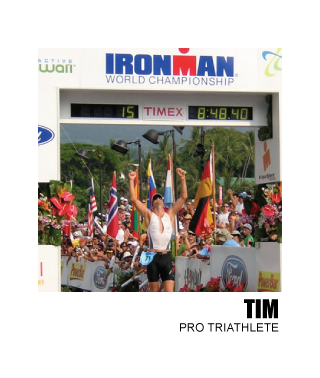By Bob Capelli and Gerald R. Cysewski, PhD
Q: Which of the following can BioAstin Hawaiian Astaxanthin do for athletes?
A. Make them stronger
B. Give them better stamina
C. Enable them to recover faster
D. Help joint and muscle soreness after exercise
E. Plain and simple, make them better athletes
The answer to this question is “all of the above.” There is plenty of anec¬dotal evidence as well as several human clinical studies in these areas. To put it simply, BioAstin Hawaiian Astaxanthin can make you a better athlete. World class triathletes like Honolulu’s Tim Marr swear by it. And elite marathon runners like Jonathan Lyau (who was Hawaii’s first place finisher for many years straight in the Honolulu Marathon) also love it. The active ingredient in BioAstin, Natural Astaxanthin, has been documented in many human clinical trials to support athletes in a variety of different ways. A wonderful human clinical trial on Natural Astaxanthin in 2011 was funded by Gatorade Sports Science Institute. For this study, Gatorade used competitive cyclists, sup-plementing them with a placebo or 4mg of Natural Astaxanthin each day for four weeks. From the endurance athlete’s—or for that matter—from any competitive athlete’s perspective, the results were excellent: In a 20 kilometer (about 12.5 mile) cycling time trial, the performance of the subjects taking Astaxanthin sig¬nificantly improved, while the subjects taking placebo showed no improvement. In fact, the group using Natural Astaxanthin became over 5% faster in just four weeks! Also, the cyclists tak¬ing Astaxanthin demonstrat¬ed significant improvement in their power output (Earnest, et al, 2011).
Other research very relevant to athletes shows that Natural Astaxanthin may:
• Prevent joint and muscle soreness after exercise. An excellent study done at University of Memphis showed benefits in this area back way back in 2001 (Fry, A, 2001).
• Decrease lactic acid levels in the muscles by an average of 28.6% after mid-distance running (Sawaki, et al, 2002).
• Provide anti-inflammatory and antioxidant protection to the energy-producing part of our cells—the mitochondria (Kuroki, et al, 2013).
• Reduce damage to cell membranes and DNA (Aoi, et al, 2003).
• Increase time to exhaustion during heavy exercise (Aoi, et al, 2008).
• Protect the skin from UV damage and sunburn—from the inside out. Very important for long-distance runners who train in the sun. (Lorenz, T., 2002).

